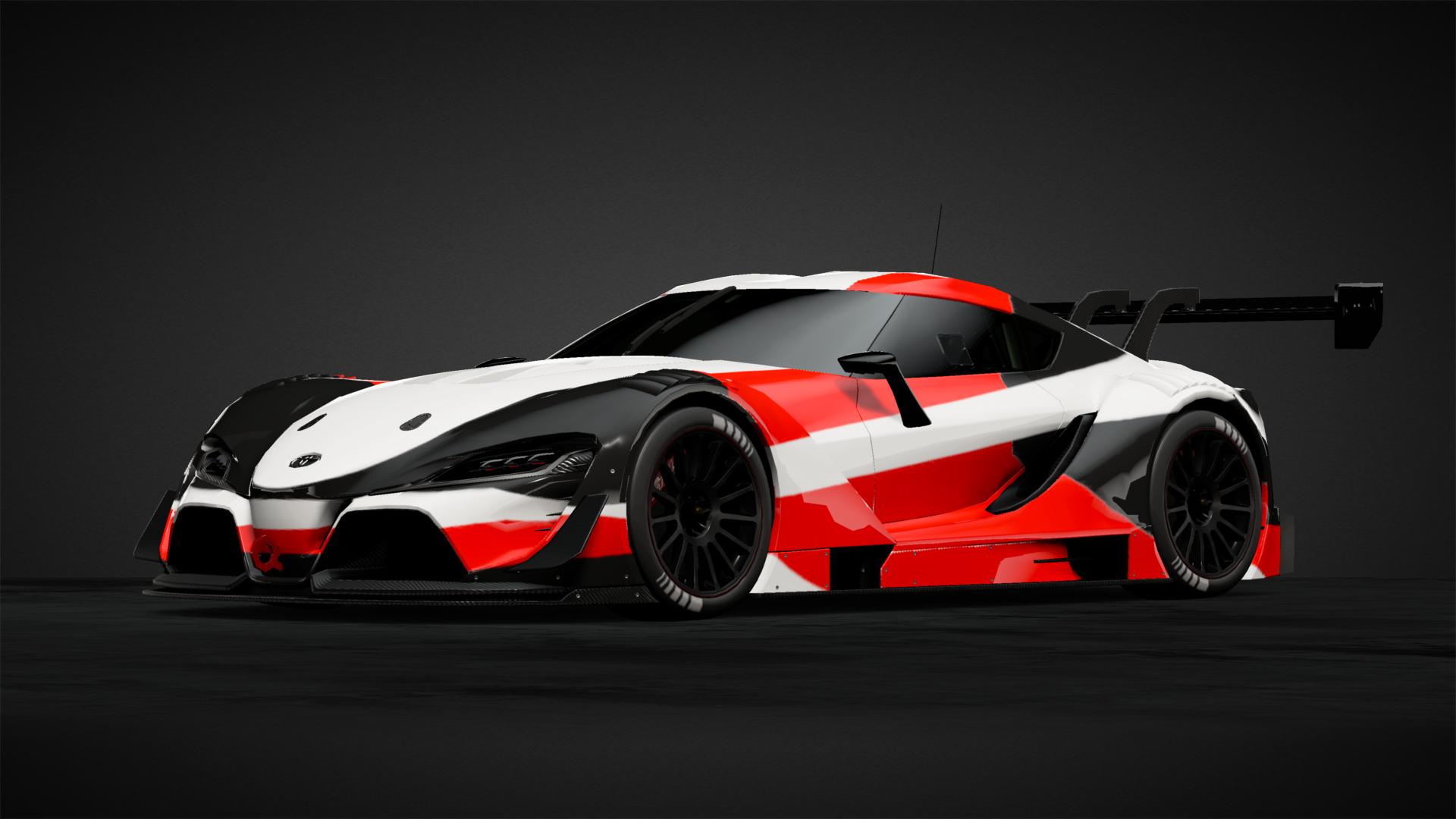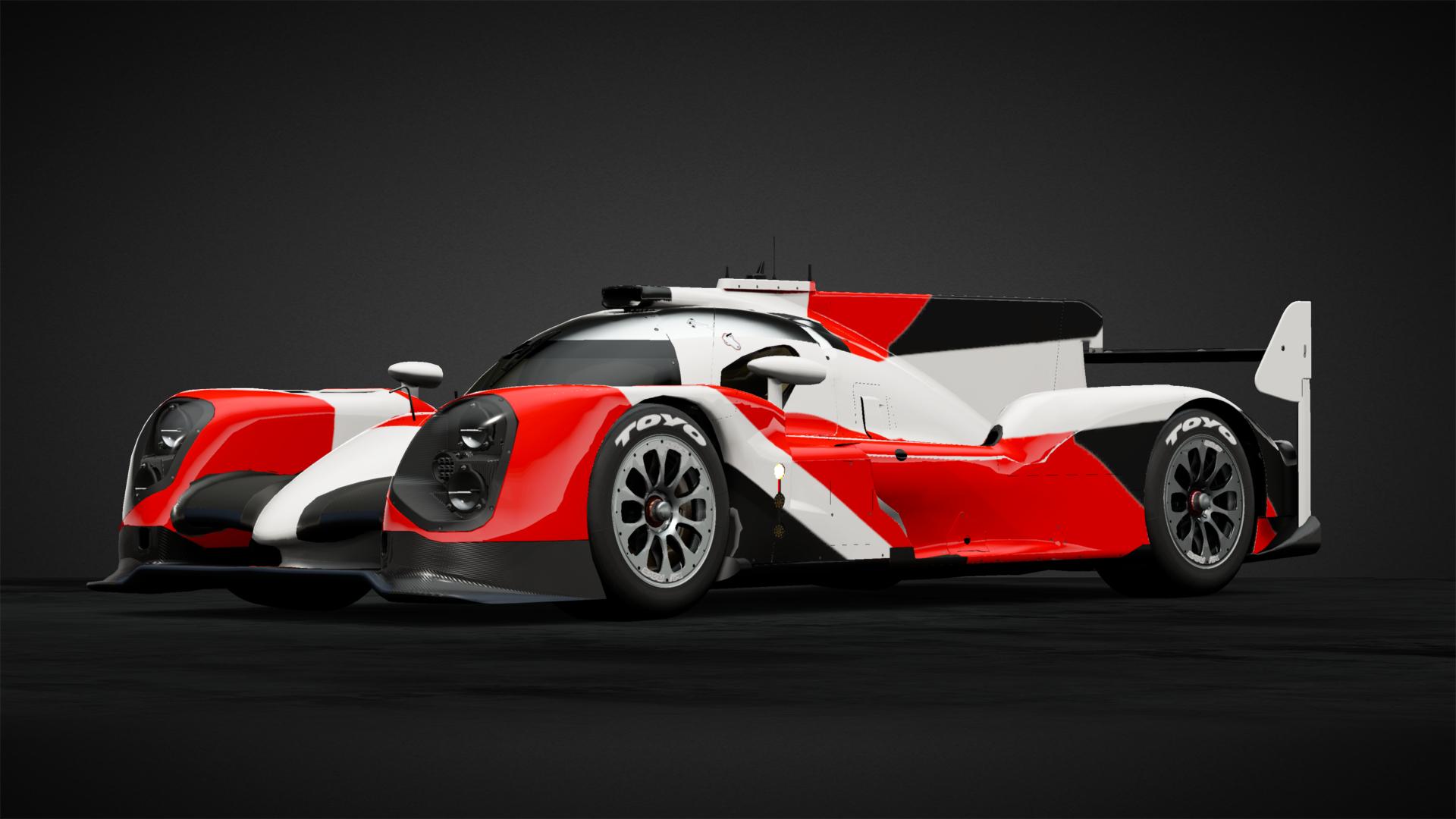
GR Supra Racing Concept
The GR Supra Racing Concept, revealed at the 2018 Geneva Motor Show, is a concept model of the Supra, a sportscar that was manufactured by Toyota up until 2002. In this concept, the model was brought back for the first time in 16 years as a race car.
The car was developed by Toyota Gazoo Racing, the division of Toyota that handles their motorsports activities and the ‘GR’ (Gazoo Racing) sports car series.
This concept with its traditional long nose/short deck form is a front engine, rear wheel drive 2 door coupe. The compact body utilises light weight, high strength carbon composite materials used in front line racing. The large blister fenders and rear wing, as well as the rear diffuser were developed to provide superior aerodynamic and driving performance.
The suspension, wheels, tyres, and brakes utilise pure race spec hardware. The interior contains a dashboard with a rear view monitor, racing seats, steering wheel with paddle shifters, and the column, pedals, roll cage, etc. are also all racing spec.
The Supra was loved by fans all over the world for a quarter of a century as ‘The Sports of Toyota’, and left a solid footprint in motorsports. Even today, many fans still eagerly await the Supra’s return as a roadcar.

Toyota GR Yaris 1st Edition RZ
Toyota has continued to challenge the World Rally Championships throughout the years in order to further refine their sportscars. And the car they developed as the base vehicle for the new rally car to be introduced in 2021, is the GR Yaris.
At a glance this may appear to be a cute compact car, but in reality this is a fighting machine built to win the WRC. The 3 door body combining two TNGA GA-B and GA-C modules has been reinforced for rigidity wherever possible, while reducing weight and lowering centre of gravity. The widened rear fenders are a tell-tale sign of its true potential, and the carbon roof which gradually descends towards the rear is a result of optimizing airflow when a rear wing is installed.
The engine powering the four-wheel drive RZ model is a G16E-GTS 1.6 litre 3 cylinder turbo. This is their latest power unit boasting the smallest size and lightest weight in its class, and produces 200 kW (268 BHP)/370 Nm. This is then matched to a 6 speed manual transmission. The drivetrain is also very interesting, with a newly developed electronically controlled coupling type centre differential adjusting the forward to rear torque distribution. In addition, the ‘RZ High Performance’ model is equipped with Torsen LSDs for both the front and rear differentials, securing rock solid traction.
The special ‘1st Edition’ model was announced together with the reveal of the GR Yaris in January 2020. This is a special limited edition model for only those who pre-ordered the car, autographed by the master driver ‘Morizo'[1] and equipped with special forged aluminium wheels.

Toyota 2000GT
“A dream car in Japanese automotive history, full of originality in both style and mechanism.”
Called Japan’s first exotic or supercar by some, the Toyota 2000GT was certainly revolutionary as far as Japanese cars went. The smooth, flowing lines of the 2000GT were reminiscent of Ferraris of the day, and it was built on a backbone chassis, which was used extensively by Lotus at the time.
Underneath its long hood was a 2.0-liter DOHC inline-6, based on the top-of-the-line Crown powerplant, which produced 147 BHP. This engine was jointly developed by Yamaha. The famous motorcycle/musical instrument maker also provided the wood grain on the car’s dashboard with materials it used for its world-class pianos.
The car’s suspension was also first rate, with double wishbones at both front and rear. But the Toyota 2000GT was not all about beauty. This highly tuned machine was able to win several times on the Fuji Speedway and Suzuka Circuit, even establishing the international speed record on the Yatabe test course going as fast as 136 mph. Two special convertible versions were produced for the James Bond movie, “You Only Live Twice,” giving the Toyota sports car worldwide appeal.
Sales of such a high-end sports car were not stellar, especially one with a price tag of 2,380,000 yen, which was twice as expensive as the luxury model Crown, and Toyota was faced with the hard reality of ceasing the car’s production after making only 300 cars.

FT-1 Vision Gran Turismo Gr.3
Based on the the FT-1 Vision Gran Turismo, this variant of the FT-1 is homologated to the Gr.3 Class to be eligible for the Gran Turismo Manufacturer’s Cup.
The designers’ original intention in designing the FT-1 was to unabashedly appeal to the die-hard car enthusiasts. In the same way, the FT-1 Vision Gran Turismo Gr.3 is designed for die-hard Gran Turismo fans. The designers focused on keeping the FT-1 Vision Gran Turismo Gr.3 authentic for the virtual racetracks of the game, to maximize their driving pleasure.
Because the bones and architecture of the FT-1 already lend itself to cooling and down force through “function-sculpting,” the vision version just needed to be enhanced as a pure racing car. The designers extensively studied racetracks and racecars and applied their research into the styling. A deep sense of rawness is evident in the FT-1 Vision Gran Turismo Gr.3, due to its purely function-driven design aesthetics. The fenders and tires are wider for extreme grip on the track. The enlarged air intakes provide increased cooling, and a larger rear wing and additional front canards have been added for even more down force. The rear diffuser has been enlarged with multiple vertical fins, and is moved further back for cleaner airflow.
The FT-1 Vision Gran Turismo Gr.3 looks and feels the way it performs, so the driver can speed through the racetracks with the same sensation and thrill of real racing.

TS050 Hybrid LMP1
The TS050 Hybrid is a prototype racing car, developed by Toyota in 2016 to compete in the LMP1 class of the FIA World Endurance Championships, which includes the famed Le Mans 24-hour race. Two years prior to this, in 2014, Toyota became the series champion in the TS040 Hybrid. In 2015 they ended the season in 3rd place, and the TS050 was developed from scratch to attempt a return to the top once again, which it later conquered Le Mans in 2018 and 2019.
As with its predecessor, the car was still an all-wheel drive hybrid with a MGU in the front and rear wheels, but the powertrain was greatly changed from the previous naturally aspirated 3.7 liter V8 to a twin turbocharged direct injection 2.4 liter V6. The battery was changed from the super capacitor with fast charge and discharge characteristics to a high-power lithium-ion battery developed for racing, with a high-power storage capacity. The total system output, including the engine and front/rear motors, is 986 BHP, making it equal to the TS040 in this respect, but the torque had been increased significantly due to the turbocharging.
Also, the MGU of the front wheels was made more compact, which allowed design changes to redirect the airflow under the car, further improving its aerodynamic performance.
Two TS050 Hybrids participated in the World Endurance Championships from the Toyota Gazoo Racing team. One was driven by Kazuki Nakajima / Sébastien Buemi / Anthony Davidson, and the other car was driven by Kamui Kobayashi / Stéphane Sarrazin / Mike Conway. In 2016 the Kobayashi team showed great speed and were a contender for the Driver’s Championship, but in the end, they finished 3rd in the season rankings, and placing 3rd in the Manufacturer’s rankings. And the finally the breakthrough was achieved with a back-to-back victory at Le Mans in 2018 and 2019 piloted by Fernando Alonso / Sébastien Buemi/ Kazuki Nakajima in the No. 8 car – redeeming Toyota’s 2016 heartbreak final-lap retirement.
